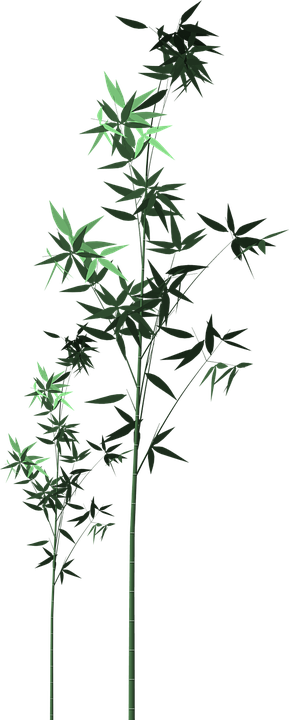How to grow and care for bamboo palm guide

The bamboo palm is a popular plant that has created a name for its self. Bamboo palms are native to Central America and Mexico. This tropical- sub-tropical plant is grown both in and outdoors. I have used the bamboo palm on many garden projects creating beautiful designs. Their growing height is about 12 ft with a width of 3-15 ft. What I love about these palms is they are natural air purifiers so if you are in the market for a natural air purifier then the bamboo palm is the plant for you. Below we will be discussing the growth and care of the Bamboo palm.
Things you must know
Planting Location
The plant location should be an area that is partially shaded to shaded.
Soil Type
The bamboo palm can tolerate a range of soil types but does well in organic-rich soil that has good drainage.
Watering Methods
When watering your bamboo palm ensure that the soil is moist, not waterlogged.
Fertilizing Methods
Fertilize your bamboo palm with a fertilizer that has been formulated for palms. Before fertilizing read and follow the manufacturer’s label because the label is the law. Fertilizers should be applied when your bamboo palm is actively growing.
Garden insect pests of the bamboo palm
The bamboo palm has its share of garden insect pests which include
- Scales
- Spider Mites
- MealyBugs
To bring these garden insect pests under control apply insecticidal soap. Before using these soaps read and follow the manufacturer’s label because the label is the law.
Diseases of the bamboo palm
Two diseases to keep an eye out for are
- Root rot
- Sooty Mold
Root Rot
When watering your bamboo palm keep an eye out for root rot, this happens because of overwatering your bamboo palm. If your bamboo palm has root rot removing the plant from the container and replacing the soil with fresh soil will offer some help also discontinue watering your plant until bamboo shows signs of bouncing back before watering again.
Sooty Mold
Sooty mold is a black fungus that is caused by the garden insect pests of this plant, these molds are formed from the insect secretion known as honeydew. This sugary substance or honeydew will attract ants, also the mold that forms are black giving your plant an unattractive dirty appearance. These molds can also interfere with photosynthesis which is the process by which plants manufacture’s or produce their foods. To control sooty molds depends on controlling these insect pests ( scales, mealybugs, and spider mites ) that contribute to this issue. The use of insecticidal soap as mention earlier will bring these garden insect pests under control.
Ideas where to install them
Here are just a few ideas on where to install the bamboo palm
1. These palms can be installed as a specimen or stand-alone plant.
2. Can be Installed along fences.
3. Looks great planted alongside walls.
4. Dose nicely as a backdrop in garden beds.
5. Can be installed on either side of a door’s main entrance.
6. Installing bamboo palms along a garden walk pathway is great.
7. Can be planted in containers and the containers can be placed on your patio or porch.
8. Bamboos can be used as a privacy plant to screen areas.
Container grown bamboo palm
Container grown bamboo palms are easy to grow and care for, the container should be large enough to accommodate your bamboo palm. Ensure that the container has drain holes to allow water runoff after giving your palm a drink of water. The soil type should be organic-rich soil that has good drainage. Treat garden insect pests and disease as discussed above.
Fertilize and water as mentioned earlier. Your container should be placed in an area that is partially shaded to shaded. To top it off if you prefer, adding mulch or nuggets as decoration will give that neat finish look.
Growing and Caring for the bamboo palm on the interior
As an interior plantscape designer my job was to create garden designs that would give that wow, the bamboo palm was one of those plants that were often used. We would install these plants directly in the soil in the plant beds or we would install them in decorative containers. The areas these palms would be placed in were areas that had indirect bright light.
When installing your bamboo palms on the interior, the container should be placed in an area that gets indirect bright light. The containers should have drainage holes. The temperature should be anywhere from 65°-80°F and ensure that the humidity is right to keep your bamboo palm happy and thriving.
Additional Information
The leaves of the bamboo palm tend to get brown which can cause your plant to look unhealthy. The use of scissors to keep these edges nicely trimmed will help your plant to retain a beautiful appearance.
The bamboo palm including the berries is said to be toxic so ensure that this plant is out of the reach of children and pets.
The bamboo Palm or Chamaedorea genus consists of 1o7 species of small palm trees.
The final word
Bamboo palms are great to have as a part of your garden design or interior plantscape, these tropical beauties once properly taken care of will produce a full growth of beautiful flowers that looks really amazing. Gave your landscapes and gardens that extra flavor by investing in the bamboo palm that has proven to bring that WOW.
About the author
Norman loves being in the garden, both at home and for his job....
he is 'Natures Little helper' being outdoors, growing his vegetables and flowers from an early age.
Now having spent over 22 years in the profession he want to give some of his knowledge to others...
his vast array of hints and tips you will find scattered over this site will help you no end growing plants in your garden.
